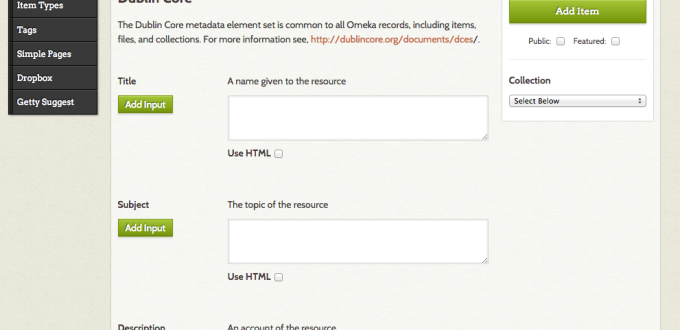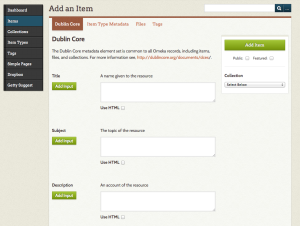Managing physical and digital files, metadata-gathering, and enabling complex internal or public searches of cultural production, ephemera, archives and/or born-digital assets are issues faced by many organizations: large, small, funded, volunteer…
At Openflows, IÂ build digital catalogs and archives regularly and want to share some of those specific strategies we use at the outset of a digital project, which determine how we proceed.
FOCUS AND STRATEGY QUESTIONS
When considering what kind of software or scope needs your project has, digital archiving projects bring up a lot of questions. Here are the three we start with:
WHY am I collecting this?
Is it to document an individual, movement, history? Is it to archive for future research
Is it to learn new information your collection could produce? How many items are first editions and prints?
Are existing taxonomies like Getty, the Library or Congress, or linked open data important to connecting this?
WHAT am I collecting and how is it organized?
Is it digital or analog? Do I have digital representations of my collection, or is all the information in text form?
Do I have taxonomies, accession records, or metadata I need to consider? Importing data from one system to another may be worth it, and adds a layer of complexity to any system.
Is my collection large? Rule of thumb: if your set of items is bigger than 100, a database can help you organize and manage it, share or display it, and discover aspects of it.
Is there a specific politic I need to think about?
Will items be moving in and out of your collection and require tracking?
WHO I am collecting it for and who is using this resource?
Will this collection be public or in-house only? Does this collection need any privacy considerations? Do you want it on the web?
Is it for researchers? Academic research requires citability, and sometimes rights management and access.
Who will be producing and/or managing this digital collection? Are they paid or volunteers? Are there many or few? A project with more financial backing can have a larger scope than those without.
BONUS QUESTION: WHY MAKE A DATABASE AT ALL?
Nowadays there are multiple software options for creating digital systems to assist in cataloging and organizing  — even better, in creating a collection management system you can generate new information from and allow new access to your existing collection, archive, or research data set.
Why manage my collection in a digital database?
Imagine your sock drawer. A database is the difference between putting your socks unmatched in a drawer, versus matching them, rolling them up together, and putting the light socks, gym socks, and winter socks in different areas. Sure they’re all in the same drawer in the first situation, but in the database they’re organized. This is how you realize that you have a lot of wool socks, how you keep track if you loan out your favorite pair, and how you can easily replace all your socks at once if your sock drawer crashes. Ok, the metaphor isn’t perfect.
*****
If you’re curious about software you can use, check out this post. If you want to look at a whole PDF about these questions, catalog functionality, and lots of nice-looking screenshots of digital catalog back-ends, download that here.


1 comment